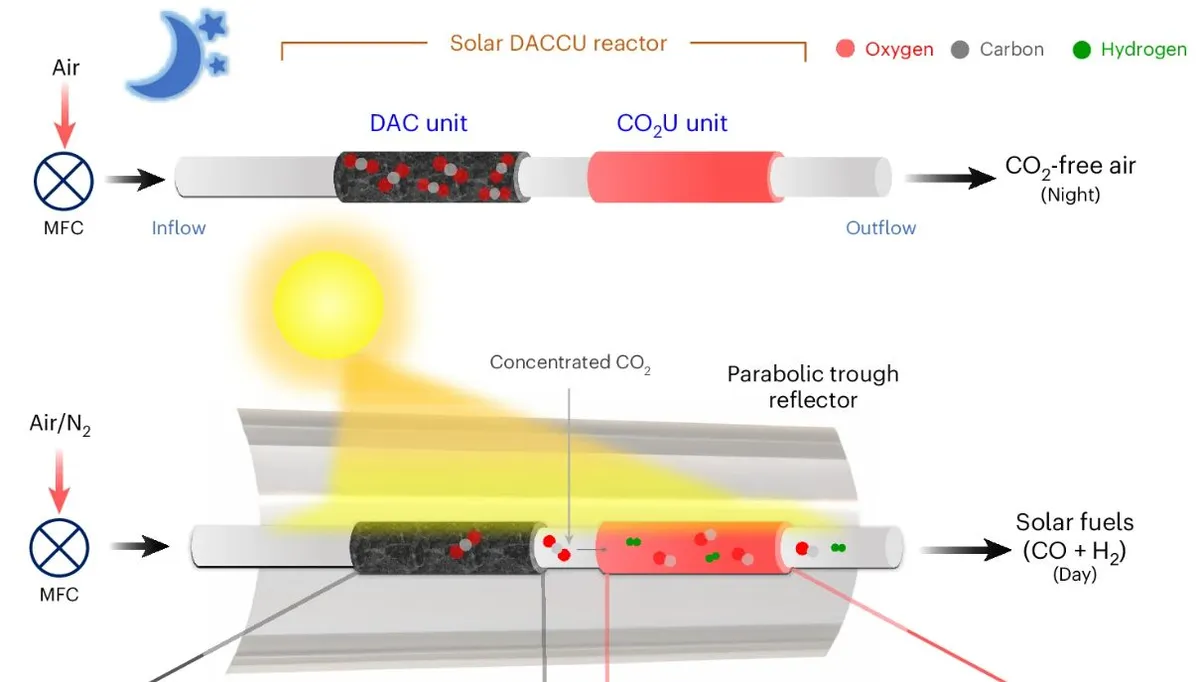
In recent years, the concentration of carbon dioxide (CO2) in the atmosphere has reached unprecedented levels, surpassing any recorded figures in human history. This alarming trend raises a critical question: can we effectively utilize these excess carbon atoms for beneficial purposes? Although the idea of capturing CO2 directly from the air sounds appealing, the reality is that direct air capture (DAC) presents significant challenges.
Researchers at the University of Cambridge have made strides in this field by developing a method known as direct air capture and utilization (DACCU). According to their findings published in the journal Nature Energy, this innovative approach eliminates the need for pure CO2 feedstock. Instead, it captures carbon dioxide directly from ambient air as it flows over a bed of solid silica-amine.
The process begins with the adsorption of CO2, which is subsequently released when exposed to concentrated light. This step is crucial as it prepares the captured CO2 for conversion into syngas—a mixture of carbon monoxide (CO) and hydrogen (H2). The conversion occurs when the released CO2 is passed over a second bed made up of silica/alumina-titania-cobalt bis(terpyridine), which serves as a photocatalyst.
The researchers envision a practical scenario where CO2 is captured during the night and released during the day using concentrated solar power. This dual-phase operation allows for efficient energy utilization, as the inlet air is directed only over the adsorption section at night, and the inlet is turned off during the syngas production phase.
Initial laboratory tests of this proof-of-concept have shown promising results, with the outlet air being stripped of nearly all CO2 and achieving a remarkably high conversion ratio from CO2 to syngas. The implications of this technology are significant, as syngas has historically been employed not only as a replacement for gasoline but also as a vital source of hydrogen. It plays a crucial role in processes like steam reformation (SMR) of natural gas, reduction of iron ore, and the production of methanol—an essential precursor for various industrial applications.
While the DACCU approach shows great potential, its viability as an alternative to existing methods like SMR will only become apparent as the technology transitions from laboratory conditions to real-world applications. The ongoing research and development in this area could pave the way for innovative solutions to combat climate change and efficiently utilize atmospheric carbon dioxide.
In conclusion, the advancements made by researchers at the University of Cambridge represent a significant step forward in the quest to capture and utilize CO2 effectively. As we continue to seek ways to mitigate the effects of climate change, technologies like DACCU may offer a sustainable pathway forward.
Thanks to Dan for the insightful tip on this groundbreaking research.